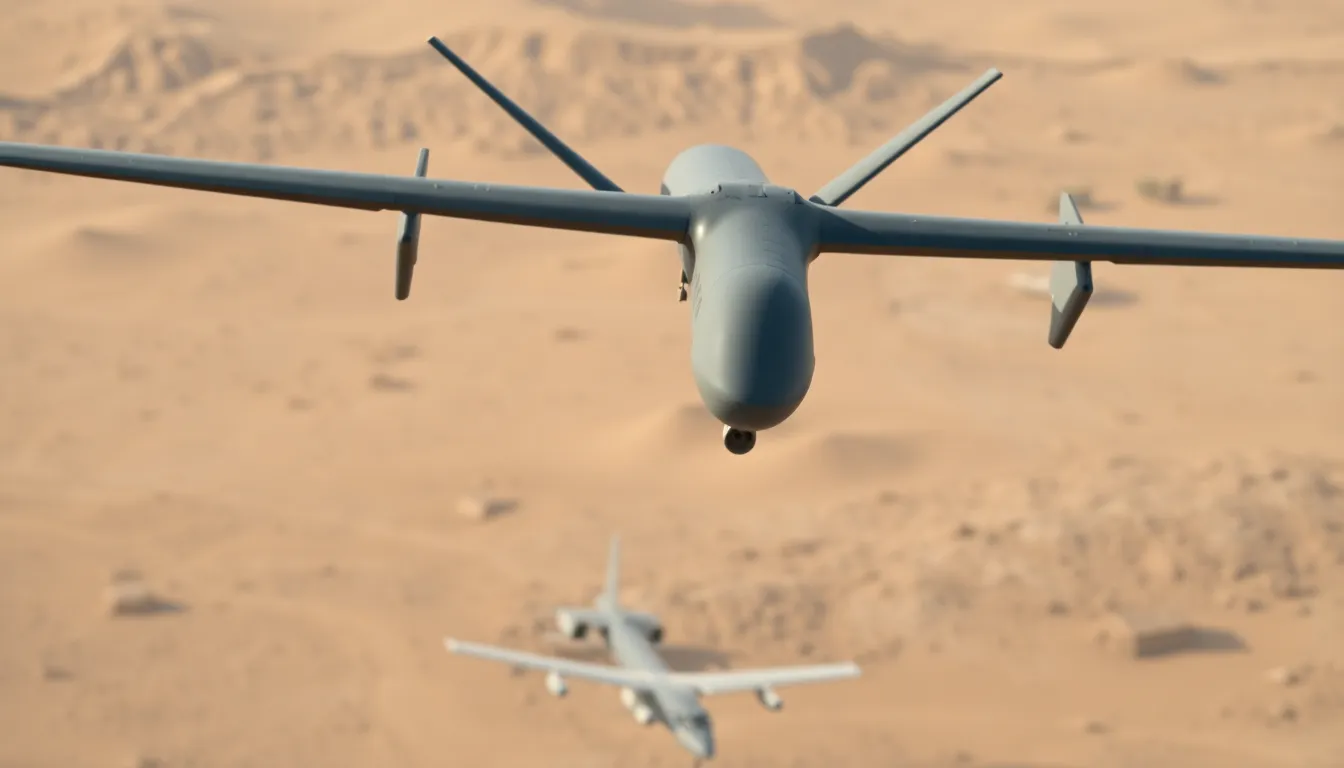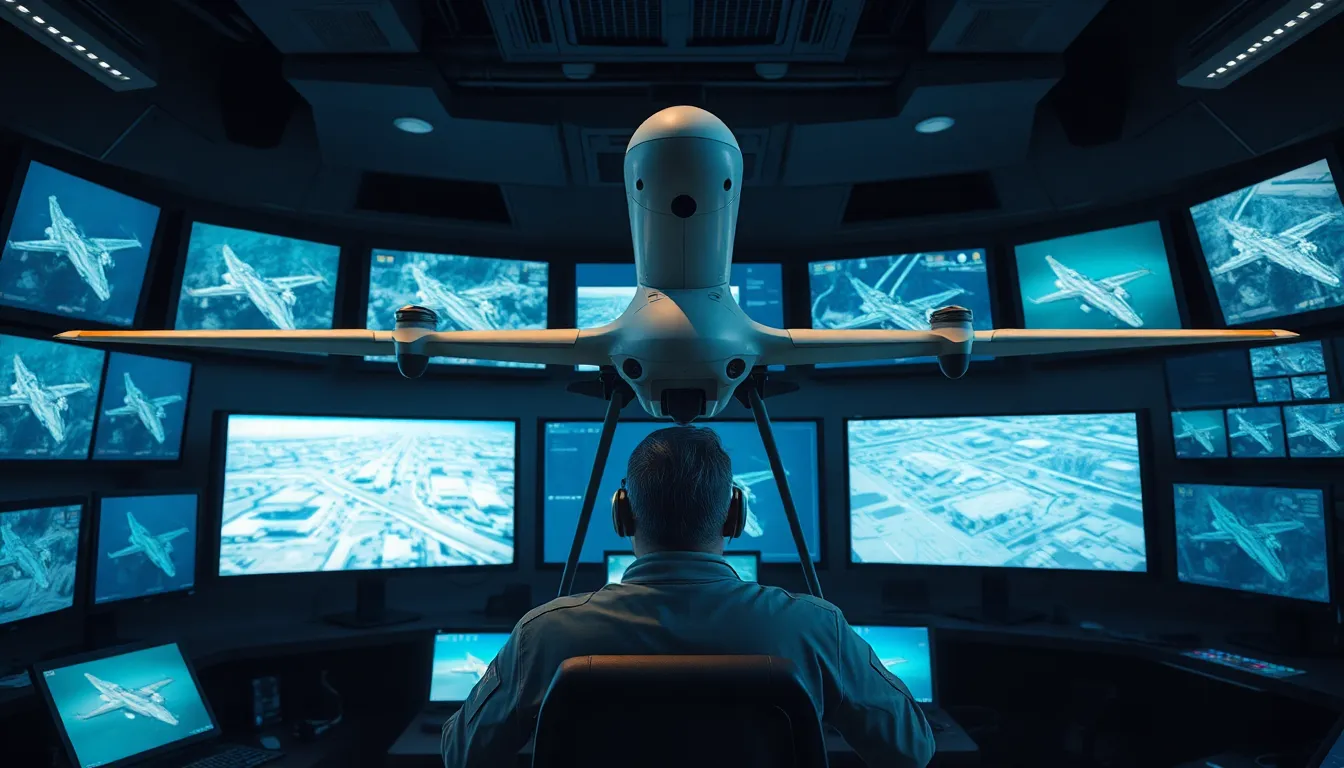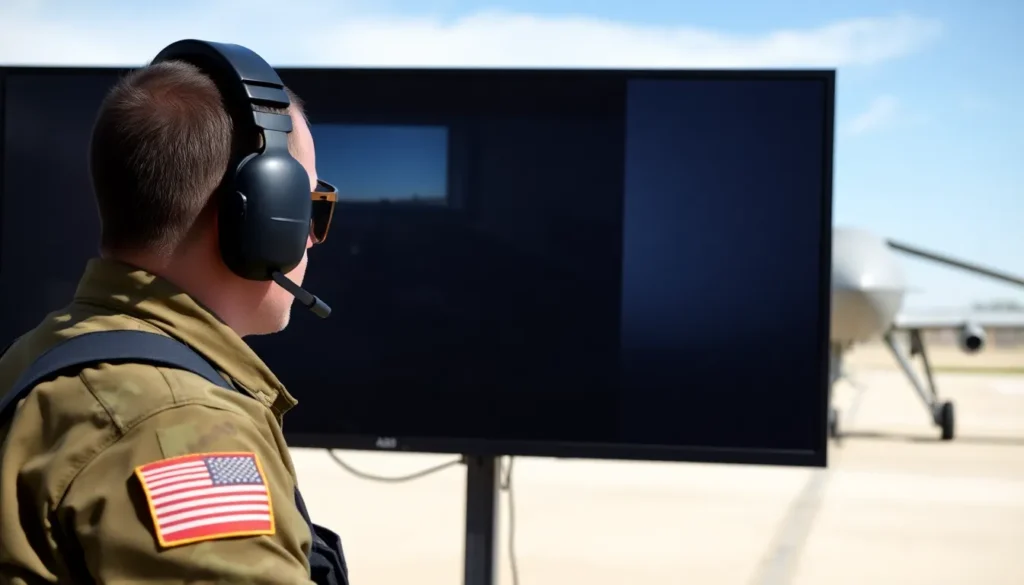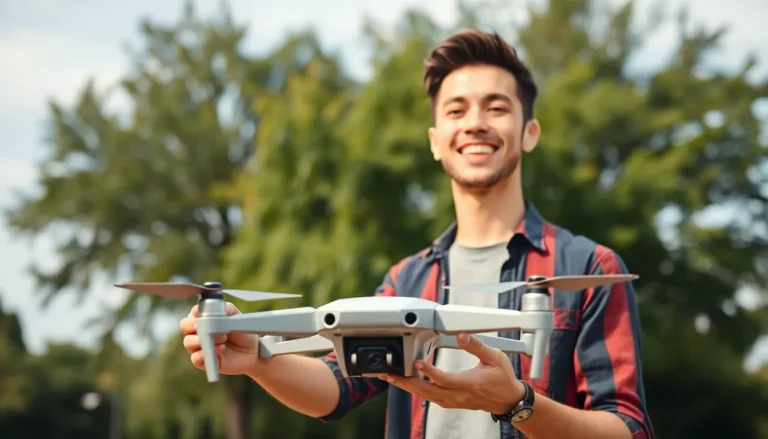Table of Contents
ToggleIn a world where technology seems to outpace even the wildest sci-fi fantasies, military drones have taken center stage, transforming the battlefield into a high-tech playground. These flying marvels aren’t just for show; they’re equipped with cutting-edge capabilities that make them the superheroes of modern warfare. Imagine a device that can soar through the skies, gather intelligence, and even deliver precision strikes—all without breaking a sweat.
But it’s not all serious business. Picture a drone zipping around like a pesky mosquito, gathering intel while avoiding the chaos below. With their ability to operate in the most challenging environments, military drones are redefining how nations approach defense. As they continue to evolve, one can’t help but wonder: are we preparing for a future where our aerial companions might just take over the world—or at least the skies? Buckle up, because the age of military drones is just getting started.
Overview of Military Drones
Military drones, also known as unmanned aerial vehicles (UAVs), play a crucial role in contemporary defense strategies. These platforms possess advanced technologies that enhance operational capabilities, enabling real-time intelligence gathering and surveillance. Various models serve distinct purposes, from reconnaissance missions to direct combat engagements, exemplifying their versatility.
The types of military drones vary considerably. Reconnaissance drones, like the RQ-4 Global Hawk, excel in gathering high-resolution imagery over vast areas. Combat drones, such as the MQ-9 Reaper, conduct precision strikes with minimal collateral damage. Each drone type contributes unique advantages to military operations.
Drones also operate in diverse environments. They can carry out missions in extreme weather conditions, including during storms or high winds, showcasing their adaptability. Operators remotely control many drones, minimizing risk to personnel while allowing for strategic decision-making from a distance.
Cost-effectiveness marks another critical aspect of military drones. Deploying drones often incurs lower expenses compared to manned aircraft, which require extensive training and higher maintenance costs. This cost efficiency enables militaries to allocate resources more effectively.
Public perception of military drones has evolved over time. Debates surrounding ethical implications and civilian safety frequently arise as drones become more prevalent. Stakeholders discuss issues related to international law, accountability, and the potential for misuse.
The future of military drones seems promising. Continued advancements in artificial intelligence and automation may enhance their capabilities further, potentially revolutionizing warfare. As technologies develop, drones may increasingly feature in defense strategies, shaping how nations approach military operations.
Types of Military Drones


Military drones come in various types, each designed for specific roles in modern warfare. These aerial vehicles enhance operational capabilities, providing crucial support on the battlefield.
Unmanned Aerial Vehicles (UAVs)
Unmanned aerial vehicles represent a broad category of military drones that operate without a human pilot. They collect intelligence, perform surveillance, and execute reconnaissance missions. RQ-4 Global Hawk stands as a prominent example, offering high-resolution imagery crucial for battlefield awareness. Many UAVs also feature advanced sensors and communications systems, allowing real-time data transmission. These capabilities improve decision-making processes, significantly impacting military strategy and effectiveness during operations.
Combat Drones
Combat drones are specifically designed to carry out offensive operations against enemy targets. The MQ-9 Reaper serves as a notable model, recognized for its precision strike abilities and versatility. Capable of deploying various munitions, combat drones minimize collateral damage while maximizing mission success. Features such as remote operation and advanced targeting systems enhance the effectiveness of these drones in combat scenarios. Through effective deployment, combat drones reshape warfare by allowing forces to engage threats with greater safety and efficiency.
Advantages of Military Drones
Military drones streamline operations and enhance battlefield capabilities. Their cost-effectiveness and operational efficiency play pivotal roles in modern defense strategies.
Cost-Effectiveness
Drones significantly reduce operational costs compared to manned aircraft. Maintenance, fuel, and personnel expenses decrease when utilizing unmanned aerial vehicles. For instance, the MQ-9 Reaper, a combat drone, offers advanced strike capabilities at a fraction of the cost of traditional fighter jets. Budget constraints benefit from these savings, allowing for resource reallocation to other mission-critical areas. Procurement timelines shorten, enabling rapid deployment and operational readiness. Overall, investing in military drones provides substantial financial efficiencies while maintaining robust operational support.
Operational Efficiency
Operational efficiency increases with the integration of military drones. Equipped with advanced sensors, they gather real-time intelligence and relay data faster than traditional methods. Drones, such as the RQ-4 Global Hawk, excel in continuous surveillance missions, enhancing situational awareness. Flexibility characterizes their deployment, adapting easily to various mission profiles. Safety improves for personnel, as drones can carry out high-risk tasks without endangering lives. Precision strikes minimize collateral damage, optimizing engagement strategies during conflict. Ultimately, military drones revolutionize approaches to modern warfare through enhanced efficiency and effectiveness.
Challenges and Controversies
Military drones present various challenges and controversies that increasingly shape their use in modern warfare.
Ethical Considerations
Concerns regarding ethical implications emerge prominently in discussions about military drones. Some argue that the remote operation of these devices can depersonalize warfare, making it easier to conduct strikes without direct human involvement. Critics point out potential violations of international human rights, especially when civilian casualties occur during operations. Conversations often center on accountability; determining who is responsible for drone strikes raises significant questions. Misidentifications while targeting can lead to tragic outcomes, complicating the moral landscape of using drones in combat. The evolving technology further prompts debates about autonomous systems and the potential for machines to make life-and-death decisions.
Security Risks
Security risks associated with military drones also generate significant concern. The potential for hacking or cyber attacks poses a serious threat; adversaries may target drones to gain control or gather sensitive data. Once compromised, these systems can be weaponized against their operators, leading to severe consequences. Furthermore, the proliferation of drone technology means that non-state actors might acquire similar capabilities, potentially enabling terrorist organizations to conduct attacks. Increased reliance on drones raises fears about overreliance on technology in military operations, possibly leading to vulnerabilities. Managing these risks requires ongoing vigilance and robust cybersecurity measures to ensure operational integrity.
The Future of Military Drones
Military drones are evolving rapidly, pushing the boundaries of current technology and strategies. As advancements continue, their impact on modern warfare becomes increasingly significant.
Technological Advancements
Innovative developments enhance military drones’ capabilities, introducing features that improve their effectiveness. AI integration plays a crucial role in automating intelligence analysis, allowing drones to process real-time data efficiently. Improved battery life extends operational ranges, enabling deployments over vast distances. Enhanced guidance systems increase accuracy, reducing the risk of collateral damage during strikes. Moreover, next-generation materials make drones more resistant to adverse weather conditions and enhance their stealth capabilities. These advancements position military drones as pivotal assets in future military operations.
Evolving Warfare Tactics
Tactical shifts occur as military drones reshape how conflicts are approached. Remote operations allow operators to engage in high-risk missions while ensuring personnel safety. Real-time intelligence gathering changes the dynamics of surveillance, providing actionable insights that influence operational decisions. Forces increasingly employ drones in collaborative missions with manned systems, creating a multi-domain approach to engagements. Enhanced communication technologies ensure seamless coordination among units, improving overall mission success. Militaries adapt to these new tactics, integrating drones into their core strategies for effectiveness and efficiency.
Military drones are transforming the landscape of warfare with their advanced capabilities and versatility. As they continue to evolve through technological innovations like AI integration and improved guidance systems, their role in defense strategies will only become more pronounced. The balance between operational efficiency and ethical considerations remains a critical discussion as these unmanned systems become more integrated into military operations.
The future of military drones promises to reshape conflict dynamics, allowing forces to engage threats with unprecedented safety and precision. As nations adapt to this new era of warfare, the implications for international law and civilian safety will demand ongoing scrutiny and dialogue. Ultimately, military drones are set to remain at the forefront of modern combat, influencing tactics and strategies for years to come.







